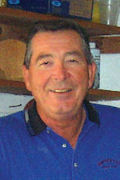Piano Technicians Guild
WESTPAC - Western and Pacific Regional Conference
February 26-March 1, 2015
DoubleTree by Hilton , Ontario, CA
Conference Schedule in Calendar Format [PDF] [revised 2/27/15]
Schedule by Class Category [PDF] [revised 2/27/15]
History
NOTE: Click on an instructor's name to see a bio.
Ivory
You’ll enjoy this informative class describing the history, products manufactured of ivory, ivory piano key covering and tips on working with used ivory. With information and slides from the Historical Society of Deep River, Connecticut, and Pratt-Read & Co., hear an interesting presentation from one of the experts in the field.
Prince Albert's Erard: Restorative Conservation of a Royal's Piano
The Restoration of the Prince Albert Erard grand piano at the Smithsonian Institution, focusing on two conservation treatments that brought this piano from Balmoral Castle in Scotland to the the stage of the Smithsonian Hall of Musical Instruments. This presentation will be augmented by a discussion about the recent publication of Conservation Guidelines for Historic Pianos. The guidelines are intended to help when encountering potentially significant instruments. We technicians are on the front lines and need to know how to safeguard cultural property.
 Wally
has been a member of the Connecticut Chapter of PTG for over 50 years. He has
over 30-years experience running a complete rebuilding shop including soundboard
replacement, pinblock replacement, action replacement and case refinishing.
Wally has instructed at over 35 national conventions and countless regional
seminars and technicals. He and his wife Vivian were the recipients of the
PTG 2006 Golden Hammer Award. Together they established and owned Brooks LTD,
a quality rebuilding supplies & piano parts business from 1980-2008. Brooks
LTD has successfully moved into its second generation owned by Melanie Brooks
since 2009.
Wally
has been a member of the Connecticut Chapter of PTG for over 50 years. He has
over 30-years experience running a complete rebuilding shop including soundboard
replacement, pinblock replacement, action replacement and case refinishing.
Wally has instructed at over 35 national conventions and countless regional
seminars and technicals. He and his wife Vivian were the recipients of the
PTG 2006 Golden Hammer Award. Together they established and owned Brooks LTD,
a quality rebuilding supplies & piano parts business from 1980-2008. Brooks
LTD has successfully moved into its second generation owned by Melanie Brooks
since 2009.